Commas help us to read and write with clarity. Unfortunately, they often end up in the wrong position.
To avoid any errors in your writing, here is how to use commas correctly:
- Commas and Conjunctions
- Comma Splices
- Serial Commas
- Bracketing Commas
- Words in Apposition
- Commas with Adjectives
- Introductory Phrases
- Showing Omission
1. Commas and Conjunctions
A comma is used to separate two independent clauses when they’re joined by a coordinating conjunction. (To identify an independent clause, just remember that it needs to be able to stand by itself as a full sentence.)
In total, there are seven of these particular conjunctions: for, and, nor, but, or, yet, and so. The acronym FANBOYS is an easy way to remember them.
My favorite color is blue, but I also like purple.
Lauren is a charming girl, and she always has a smile on her face.
My throat is very sore today, so I’m not going to work.
When a dependent clause follows the conjunction, you should avoid using a comma to separate the clauses. (You can spot a dependent clause by the fact that they can’t stand by themselves as full sentences.)
The Arctic is beautiful but very cold.
This task was hard to do yet worth the time it took us.
I forgot my briefcase on the bus and am desperate to get it back.
If you wanted to use a comma before these conjunctions, here is how you could revise the above sentences to make them still read grammatically:
The Arctic is beautiful, but it is very cold.
This task was hard to do, yet it was worth the time it took us.
I forgot my briefcase on the bus, and I am desperate to get it back.
Now there are full sentences on both sides of each coordinating conjunction. This allows you to use a comma to separate the two clauses.
2. Comma Splices
If you use a comma to combine two full sentences together without a conjunction, this is called a comma splice. It is also one of the biggest errors to avoid in your writing.
* I went to the park yesterday, it was very busy.
* My mother is a librarian, my father is a painter.
* My hobby is birdwatching, I find it relaxing.
In cases like these, you need to add a conjunction after the comma:
My mother is a librarian, and my father is a painter.
Another option would be to replace the comma in the original sentence with a semicolon:
My mother is a librarian; my father is a painter.
3. Serial Commas
Commas can be used to separate the items in a list:
I went shopping and bought apples, carrots, bananas, and pickles.
You can think of these commas like they’re replacing the word “and”:
I went shopping and bought apples and carrots and bananas and pickles.
Whether to use a comma before the final “and” or “or” in a list depends on if you need to use a serial comma (also known as the Oxford comma). Its use is standard in American English but much less common in British English. For example, a book written in London would be far more likely to omit that final comma:
I went shopping and bought apples, carrots, bananas and pickles.
Even in British English, though, there are instances where a serial comma needs to be used. For example, if one or more of the items on a list is already joined by an “and,” then a serial comma is used to help ensure that the intended meaning is clear.
My favorite musicians are Bob Dylan, John Lennon, and Simon and Garfunkel.
Without the serial comma, the sentence would read like this:
My favorite musicians are Bob Dylan, John Lennon and Simon and Garfunkel.
This is confusing to read because it seems like “Simon” and “Garfunkel” are separate items on the list instead of one item together: “Simon and Garfunkel.” A serial comma also adds clarity when you have a list of independent clauses bundled together:
The kitchen sink has started to leak, there’s a strange noise coming from my air conditioner, and the lights in my bedroom keep flickering on and off again.
4. Bracketing Commas
If part of a sentence isn’t essential to its meaning, you can use bracketing commas to isolate it. A common mistake with this type of comma is forgetting that they are almost always used in pairs: one comma is placed on both sides of the non-essential information. This is how appositional commas work:
Neil Armstrong, the first person to walk on the moon, is greatly admired.
My brother, an avid bookworm, spends most of his time reading.
The Sahara Desert, found in northern Africa, is the largest desert in the world.
In each of these examples, the information between the commas could be taken away and the remaining sentences would still make sense:
Neil Armstrong is greatly admired.
My brother spends most of his time reading.
The Sahara Desert is the largest desert in the world.
This is a great way to check if your bracketing commas are in the right positions. If you can remove the words between them and the sentence is still grammatical and makes sense, then the bracketing commas are probably correct.
Here are some common errors to avoid:
* Neil Armstrong, the first person to walk on the moon is world famous.
In the above example, only one comma has been used. However, a second one is also needed. Remember that bracketing commas like these should come in pairs.
* The Sahara Desert, found in northern Africa is the largest desert, in the world.
But what about now? If we take out the words between the bracketing commas, the remaining sentence would read like this: “The Sahara Desert in the world.” This doesn’t make sense, so we know that we need to reposition those commas.
5. Words in Apposition
To put it simply, an appositive is a word (usually a noun or pronoun) that helps to identify another noun or noun phrase that comes earlier in the sentence:
My only brother, Kevin, went overseas for Christmas.
The band’s drummer, Adam Truman, will retire this year from making music.
The biggest country in the world, Russia, has been in the news a lot these days.
In these examples, the appositives tell us more about the nouns that come before them: The brother’s name is Kevin, the band’s drummer is Adam Truman, and the biggest country in the world is Russia.
Commas are used to bracket these appositives because the information they share is not essential to our understanding of the sentences. For example, if someone only has one brother and that brother’s name is Kevin, then we know that any mention of that brother is referring to Kevin.
However, if that person has more than one brother, then that same information becomes essential. Without it, we couldn’t tell which brother the sentence is referring to. In cases like this, where certain information is needed to understand the sentence properly, we don’t insert commas around the appositive:
My cousin Lucy is a school teacher.
This sentence suggests that I have more than one cousin and that the one named Lucy is a school teacher.
The former American president Barack Obama is still very popular.
This tells us that Barack Obama is the specific American president who is still very popular. Compare this with the following sentence:
America’s first African American president, Barack Obama, is still very popular.
Here, “Barack Obama” is bracketed by commas because we know that he is the first African American president of America, so the sentence can only refer to him. As such, the appositional information is not essential to our understanding of the sentence.
6. Commas with Adjectives
We use adjectives to describe nouns. Look at the use of “massive,” “white,” and “scary” in the following examples:
A massive tree
A white bird
A scary dream
These descriptions are straightforward. But when more than one adjective is used to describe something, the situation becomes a bit more complicated.
When multiple adjectives all describe the same noun but do so in different ways, you don’t insert a comma between them:
We met a persistent old woman.
If we added a comma between these adjectives, the above example would read like this:
* We met a persistent, old woman.
This would be similar to saying “We met a persistent and old woman,” which sounds wrong. This is because the adjectives “persistent” and “old” are describing the noun (“woman”) in different ways: we met an old woman who was persistent. Here, “old” is more closely related to the noun (“woman”) than “persistent” is, so we don’t use a comma.
Now let’s look at another example:
It was a dark, rainy day.
If we replaced the comma with “and,” we would have the following sentence: “It was a dark and rainy day.” This sounds fine. But what makes it different from the earlier example?
Well, the adjectives “dark” and “rainy” are both describing the noun (“day”) in the same way: the day was dark and rainy. Both “dark” and “rainy” are equally related to the noun, so a comma is used to separate them.
Here is an easy way to test if you should insert a comma between your adjectives: swap them around and add “and” between them. If the sentence you get still sounds okay, then a comma is probably fine to use between the adjectives.
It was a dark, rainy day.
It was a rainy, dark day.
It was a rainy and dark day.
But if the swapped adjectives don’t sound right, then you know that you probably shouldn’t insert a comma between them. Take a look at these examples:
* She met an excited, foreign tourist.
* She met an excited and foreign tourist.
* She met a foreign and excited tourist.
None of these sentences sound correct, so no comma is used:
She met an excited foreign tourist.
7. Introductory Phrases
It’s common for a sentence to begin with an introductory phrase. In most instances, these should be followed by a comma:
After lunch, we went for a walk at the park.
By the next day, all our plans had come together.
In Peter’s opinion, space exploration is vital.
When it comes to introductory phrases, the safest option is to simply follow them with a comma. This will avoid any confusion on the reader’s part.
That said, if the introductory phrase is very short, then you can often leave the comma out without any trouble:
In 2007 I visited Rome.
In Tokyo the streets are incredibly busy.
This is largely a matter of personal preference and style. But the safest option for any writer is to punctuate these sentences as follows:
In 2007, I visited Rome.
In Tokyo, the streets are incredibly busy.
However, whenever a sentence begins with a subordinating clause, you should always follow it with a comma in order to separate it from the main clause:
Until you hear the buzzer beep, you mustn’t start running.
Although he was very old, John still had a clear and active mind.
Unless you work much harder, you won’t achieve your goals.
In the opposite case, where a main clause begins the sentence, you don’t need to always follow it with a comma. However, choosing to do so isn’t wrong, and it can provide the reader with greater clarity, particularly when the sentence is long or complicated.
8. Showing Omission
At times, you might want to avoid repeating a word or phrase too soon. To accomplish this, we can sometimes rely on a simple comma. Have a look at the following sentence:
Some snakes are known to be venomous; other snakes are known to be less dangerous.
To avoid repeating part of the same wording, we can use a comma to revise the sentence as follows:
Some snakes are known to be venomous; others, to be less dangerous.
Here, the comma indicates that some of the earlier wording is being repeated (“snakes are known”). This saves your writing from some unnecessary repetition. However, whenever you leave out words like this, you need to consider how clearly the reader will understand your sentence.
It is always safest to err on the side of clarity. If you have any doubts or think that the meaning of your sentence might be unclear, then avoid omitting that information.
For more help with your grammar, check out these fantastic books:

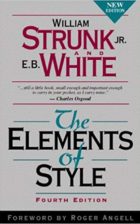
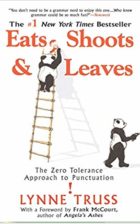


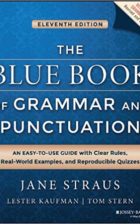
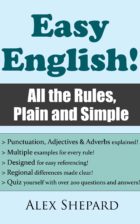
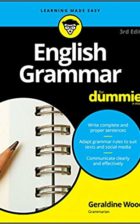
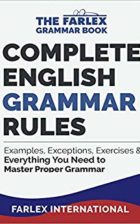
My English teacher was really strict about avoiding comma splices. It’s one aspect of punctuation that I’m always really conscious of now.